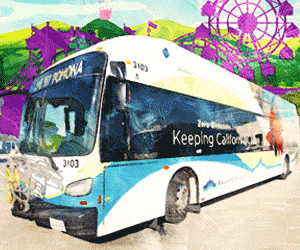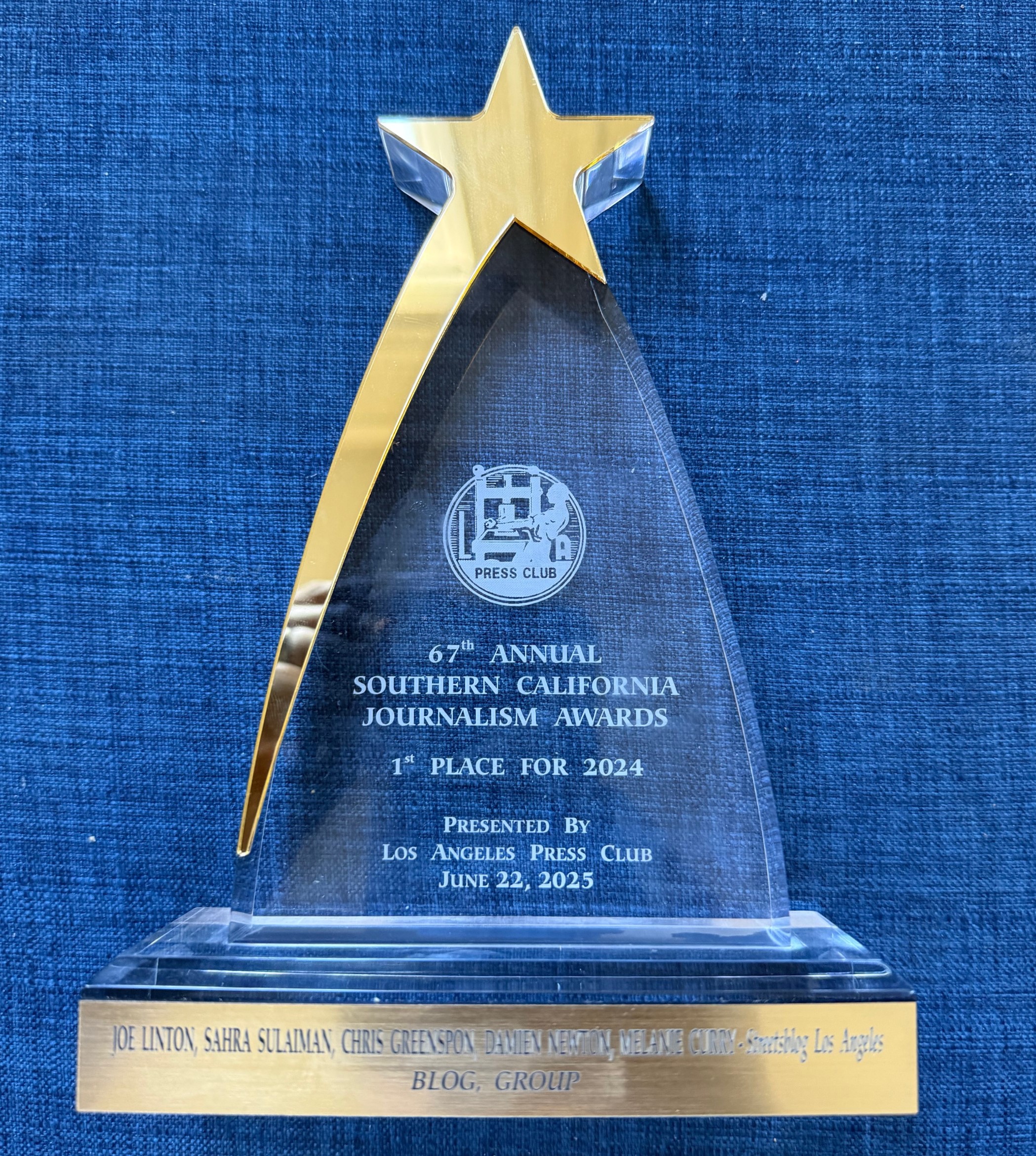 The full model that will be on displat at Washington Adams Gallery on 12/17. Photo: James Rojas
The full model that will be on displat at Washington Adams Gallery on 12/17. Photo: James RojasThe opening up of the Eastside Gold Line Light Rail afforded twenty-four students from Mujeres y Hombres Nobles Continuation High School in East Los Angeles and I the opportunity to explore urban planning and transportation options together. As part of the HeArt Project (www.theheartproject.org), I taught a 10-week art course that used the rail line and urban planning as the subject.
Many of the students come from low-income families that use daily public transportation so this was very relevant to their lives. They witnessed the construction of the light rail in their community for the past couple of years. In fact one student now uses the existing Pasadena Gold Line to the Eastside to get to school.
I developed a curriculum that used their built environment and included presentations, discussions and model building to engage the high energy students on this topic. Each session focused on a variety of topics such as mobility, open space, architecture, and geography. Class activities included mapping their community, designing buildings, examining open space, constructing the rail line, and writing their thoughts on urban planning.
During the course students were tasked to re-imagine and create a model of the Gold Line taking into consideration land use and accessibility in their community.
The students broke into groups of 6 and were asked to plan a vibrant community around the 8 Gold Line Stations by considering community destinations such as stores, homes, churches and parks. Each group was given a 24 inch by 30 inch form core base to construct their group model of the stations and vicinity. Students used a medley of recycled materials, including construction paper, colored blocks, and bottle tops to design three-dimensional models of the future Eastside Gold Line community.
The first exercise was to place the Gold Line right-a-way on the board, than map and draw out the streets and landmarks adjacent to the rail line. Next they identified land uses which led to the creation of landscape, buildings, and structures. The students constructed their destinations from the stations, such as where they lived, McDonalds, churches, their friend's homes and many more. Issues such as gang territory, busy streets, lack of parks, came up. Some students created what they would like to see such as parks, and entertainment areas around the stations. Each groups board were placed next to each other to create a vibrant 12 foot model of the Eastside Gold line.
The class culminated in a field trip to Chinatown via the new Eastside Gold Line. The students were very excited about what they learned about planning and witnessed these elements by using the train. As a planner, I learned a great deal from the students about their individual and community perceptions, and mobility patterns.
In the process, they seized the meanings of urban planning, architecture, and transportation and commanded a greater understanding of how they participate in it.
The finished 12 foot model of the Eastside Gold line and other student artwork will be on display at Washington Adams Gallery at the Pacific Design Center from Dec. 17, 2009 to Jan. 8, 2010.






